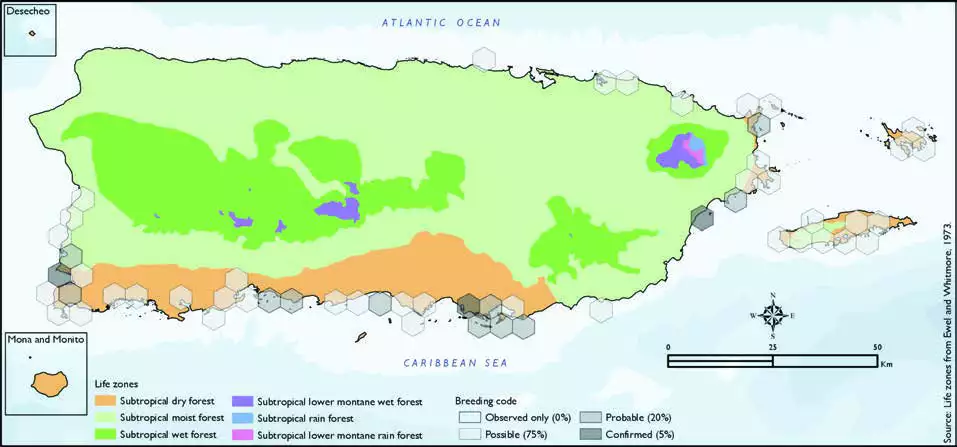Clapper Rail
Description
The clapper rail (Rallus crepitans) is a member of the rail family, Rallidae. The taxonomy for this species is confusing and still being determined. The Ridgway's rail (formerly the California clapper rail) and the mangrove rail have been recently split. Furthermore, some taxonomists consider that the King rail and Aztec rail should be considered within this group, as those birds look similar and the birds are known to interbreed where they share territories.
The clapper rail is a chicken-sized bird that rarely flies. It is grayish brown with a pale chestnut breast and a noticeable white patch under the tail. Its bill curves slightly downwards.
Distribution & Habitat
The Clapper Rail occurs from the coastal United States south
through South America including
the West Indies (Raffaele and
others 1998). It is a locally
common resident in Puerto Rico
(Raffaele 1983), especially on
mangroves and salt fl ats along
the coast (Oberle 2018, Raffale
1989a), and fairly common in
Vieques (Gemmill 2015). The
Clapper Rails habitat includes
mostly salt marshes, mangroves
(Raffaele and others 1998), and
mudfl ats (Oberle 2018). It also
occurs in pairs or small groups
on offshore mangrove cays (J.A. Salguero-Faría, personal
observation 2009). The atlas
fieldwork yielded a total of 86
records within 55 hexagons or 11
percent of the 479 total hexagons
(see map). Of the 55 hexagons
where this species was found,
breeding met the atlas definition
of confirmed in 5 percent (3)
of the hexagons, probable in
20 percent (11), and possible in
75 percent (41) (see map). Clapper Rail distribution. The map shows the highest breeding code by hexagon and overlaying the ecological life zones in
Puerto Rico. Note: percentages may not total 100 due to rounding.

Breeding Habits
The Clapper Rail builds a platform nest of sticks among
mangrove roots, and breeding
season extends from April to 91Clapper Rail/Pollo de MangleMay, according to previously published reports (Raffaele
and others 1998). Atlas results
indicate that the breeding
season for this species extends
throughout the year and peaks
in May (see chart). Results show
that this species is confined to
the coast and breeds within the
subtropical dry and subtropical
moist forest life zones (73 and
27 percent of the hexagons,
respectively), and it is closely associated with mangroves (e.g.,
note abundance of south and
southwest coastal records in
contrast to the north coast where
mangroves are patchy, with the
exception of Piñones, east of San
Juan) (see table and map).
Conservation
Overall, Clapper Rail population trends are decreasing worldwide
due to habitat loss, but it is listed as a species of least concern by
the IUCN (BirdLife International
2016). Locally, this species is
not listed under any of the
threatened categories. In Puerto
Rico, the Clapper Rail has a
protected habitat in land of 13
percent or 169 km2 of the total area covered by the hexagons
where evidence of breeding
was found for this species
(1315 km2).
Related Species
Family:
rail